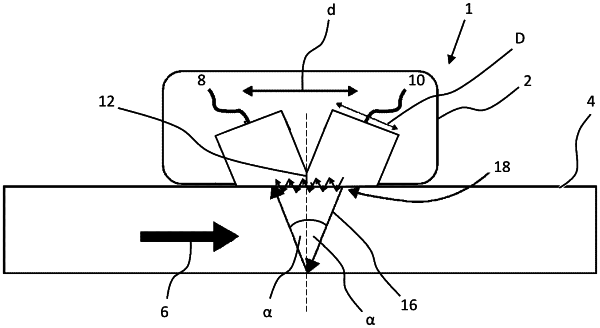| CPC G01F 15/185 (2013.01) [G01F 1/662 (2013.01); G01F 1/667 (2013.01); G01F 25/10 (2022.01); G01N 29/223 (2013.01); G01N 29/28 (2013.01); G01N 2291/0422 (2013.01); G01N 2291/044 (2013.01); G01P 5/24 (2013.01); G10K 11/02 (2013.01)] | 18 Claims |

|
1. An ultrasonic flow metering device comprising:
a first coupling member, the first coupling member being elastic and configured for acoustically coupling a first ultrasonic transducer to a fluid conduit, the first coupling member comprising:
a first face adapted to be connected to the first ultrasonic transducer and a second face adapted to be connected to the fluid conduit;
at least one first sidewall connecting the first and second faces, wherein the at least one sidewall comprises a first recess extending from the second face;
a second coupling member, the second coupling member being elastic and configured for acoustically coupling a second ultrasonic transducer to the fluid conduit, the second coupling member comprising:
a third face adapted to be connected to the second ultrasonic transducer and a fourth face adapted to be connected to the fluid conduit; and
at least one second sidewall connecting the third and fourth faces, wherein the at least one second sidewall comprises a second recess extending from the fourth face;
wherein the first and second coupling members are arranged with respect to each other such that the first recess and the second recess face each other and form a gap between the first and second coupling members, and such that contact between the first and second coupling members, that would occur in the absence of the first recess and the second recess, is avoided.
|